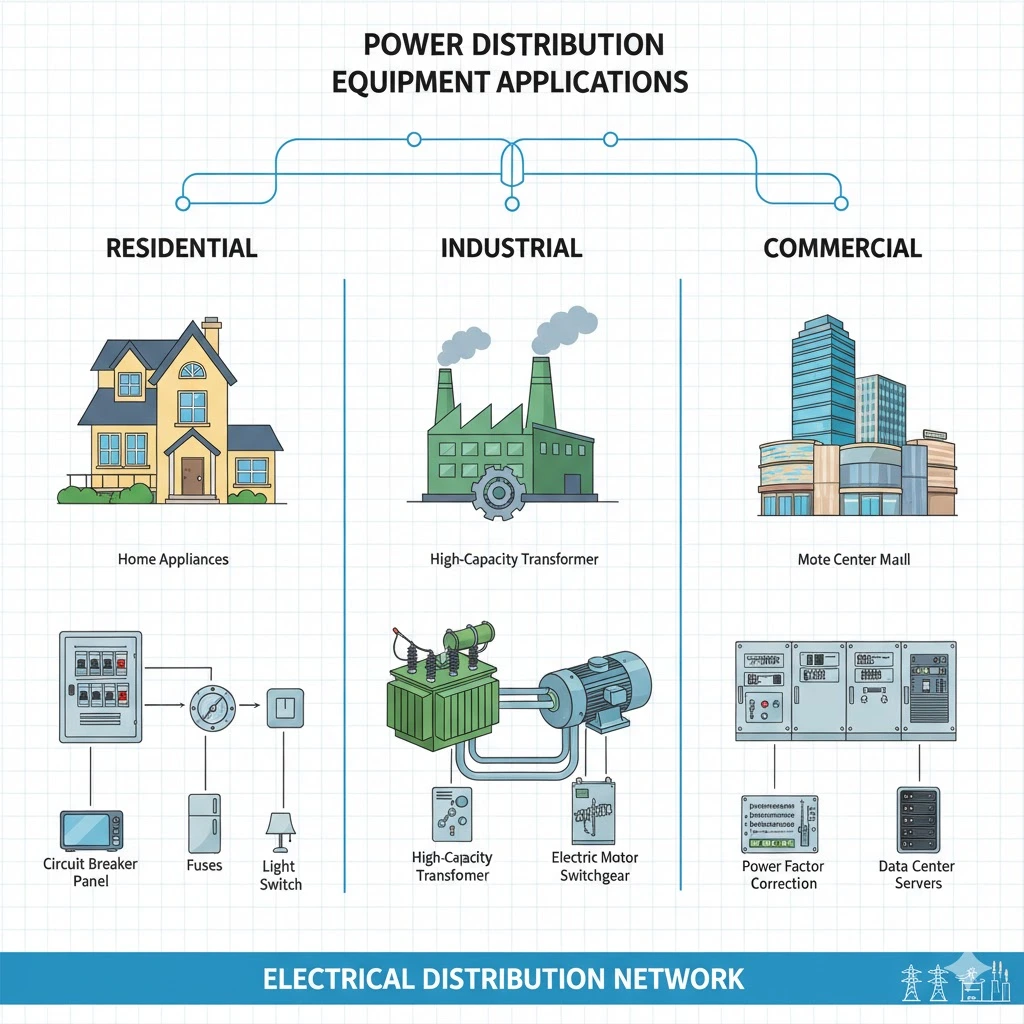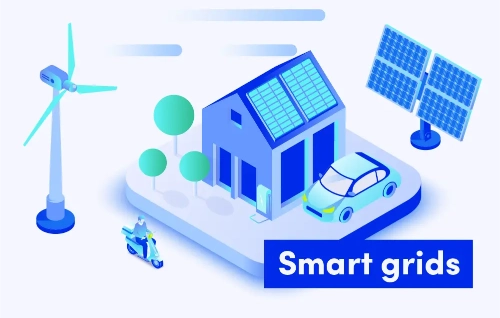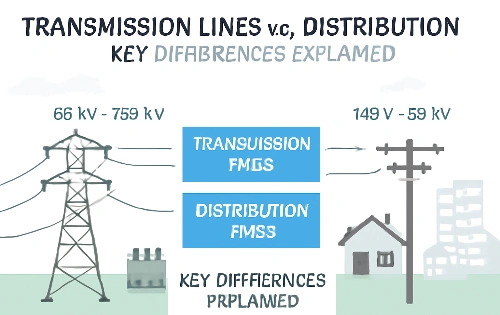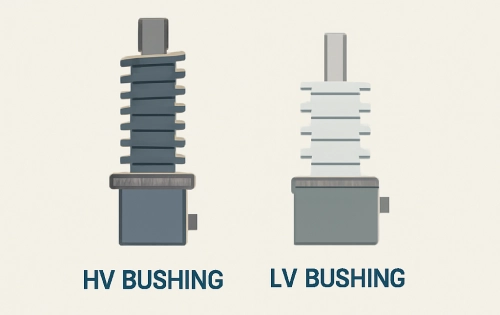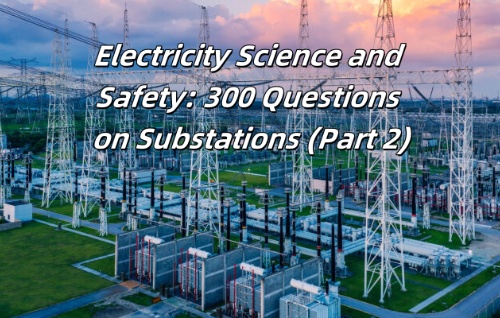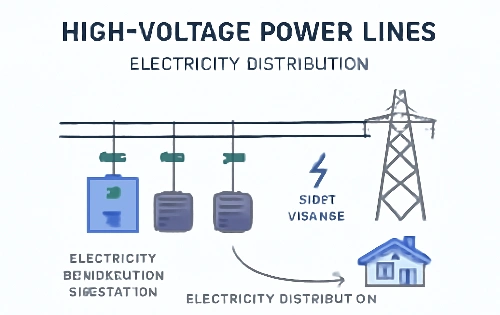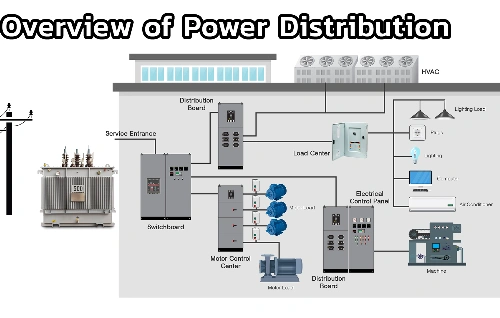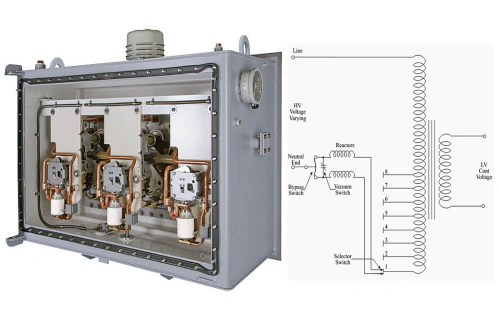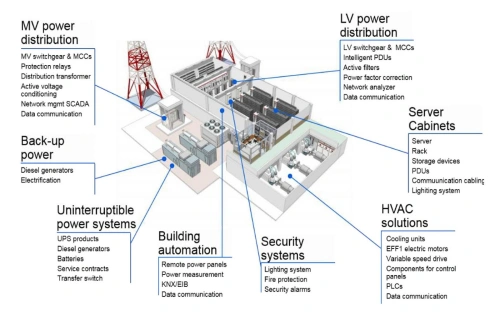A Complete Guide to Electrical Distribution Equipment: Ensuring Safe and Efficient Power Delivery
Electrical distribution systems are the backbone of modern power networks, ensuring that electricity flows safely and efficiently from power plants to residential, commercial, and industrial users. Electrical distribution equipment plays a critical role in the safe and reliable delivery of electrical power. These systems must not only handle varying levels of electrical loads but also protect against faults, maintain stability, and ensure minimal energy loss.
1. What is Electrical Distribution Equipment?
Electrical distribution equipment refers to the various devices and components used to control, protect, and distribute electricity throughout a power system. The distribution system typically starts from the substation, where electricity is stepped down from high voltage to lower voltage for use by consumers.
The main components of electrical distribution equipment include:
- Transformers
- Circuit breakers
- Switchgear
- Fuses
- Distribution panels
- Busbars
- Meters
- Protective relays
These components work together to manage the flow of electrical power, ensure safety, and protect the system from damage.
2. Key Functions of Electrical Distribution Equipment
The core functions of electrical distribution equipment include:
a. Power Conversion and Regulation
Electrical distribution transformers are responsible for stepping down the high-voltage electricity from transmission lines to lower voltage levels suitable for consumer use. This conversion is essential for safe and efficient power delivery to homes, businesses, and industries.
b. Load Management and Control
Power distribution systems must manage electrical loads by distributing power where it's needed. Circuit breakers and switchgear help control and isolate faults, preventing damage to other parts of the system. They ensure that power is distributed to different areas without overloads or outages.
c. Fault Detection and Protection
Electrical systems can experience faults such as short circuits, overloads, or ground faults. Fuses and protective relays are used to detect such issues and disconnect the affected sections to prevent further damage. These protective devices are crucial for maintaining the integrity of the entire distribution network.
d. Power Monitoring and Metering
Meters installed at key points within the system measure power consumption for billing and operational analysis. Power distribution panels are equipped with monitoring systems to track the performance of the network, optimize energy usage, and ensure safety standards are met.
3. Types of Electrical Distribution Equipment
There are several key types of equipment that make up the electrical distribution system. Each serves a specific purpose, ensuring the smooth operation of power delivery.
a. Transformers
Transformers are one of the most critical pieces of electrical distribution equipment. They are used to step up or step down voltage levels, facilitating the transfer of electrical power across long distances with minimal losses. Distribution transformers are typically used to lower high-voltage transmission to levels that can be used by residential or commercial consumers.
b. Circuit Breakers
Circuit breakers protect electrical circuits by automatically disconnecting the power when there is an overload, short circuit, or fault. They are used in both the distribution panel and throughout the network to protect individual sections of the system.
c. Switchgear
Switchgear refers to a combination of electrical disconnect switches, fuses, and circuit breakers that control, protect, and isolate electrical equipment. It is typically used in high-voltage systems and can handle both routine operations and emergency fault conditions.
d. Distribution Panels
Also known as distribution boards, these panels distribute electricity to various circuits within a building or facility. They house circuit breakers or fuses to protect each circuit from electrical faults. Distribution panels are a critical part of both residential and industrial electrical systems.
e. Busbars
Busbars are metal bars used to distribute electrical power to various circuits in a building or facility. They are often found within switchgear and distribution panels and are an efficient way to carry electricity to multiple circuits.
4. Design Principles of Electrical Distribution Systems
The design of electrical distribution systems focuses on reliability, efficiency, and safety. Several factors need to be considered when designing a distribution network:
a. Voltage Levels
The design must ensure that the system operates at appropriate voltage levels, ensuring safe transmission and distribution. Transformers are used to step down the voltage to the required levels for end-users.
b. Redundancy
For critical infrastructure, redundancy is vital to ensure continuous power supply. Switchgear and circuit breakers are used to isolate faults while maintaining power to unaffected areas.
c. Fault Detection and Protection
As mentioned earlier, circuit breakers, fuses, and protective relays are essential for ensuring that faults are detected quickly, and power is shut off to prevent further damage.
d. Energy Efficiency
Minimizing losses during power transmission and distribution is crucial. The use of high-quality power distribution equipment and efficient transformers reduces energy losses and improves overall system efficiency.
e. Scalability
Designing systems that can grow with demand is also essential. Electrical distribution equipment should be scalable to accommodate future expansions or upgrades.
5. Applications of Electrical Distribution Equipment
Electrical distribution equipment is used in various applications to ensure safe and reliable delivery of electrical power.
a. Residential Power Distribution
In homes, distribution panels and fuses regulate power to different areas, ensuring that the electrical system is safe and functioning properly. Overload protection is provided through circuit breakers.
b. Commercial and Industrial Applications
In commercial buildings, office complexes, and industrial facilities, power distribution equipment ensures that electrical systems are safe and efficient. High-capacity transformers, switchgear, and busbars are often used in these environments.
c. Power Plants and Substations
In power plants and substations, electrical distribution equipment plays a key role in managing the flow of electricity from generation to transmission and distribution. Circuit breakers and switchgear are used for fault isolation and protection.
Table:Electrical Distribution System Design Considerations|
Design Factor |
Description |
Consideration for Equipment |
|
Voltage Levels |
Determine appropriate voltage for transmission and end-user use. |
Transformer selection and rating. |
|
Redundancy |
Design for backup power sources or alternate paths in case of failure. |
Dual-feeding systems, dual transformers. |
|
Load Management |
Efficiently distribute power and balance the load across phases. |
Power Distribution Units (PDUs), Breakers |
|
Safety and Protection |
Ensure equipment is protected from overload, short circuits, and faults. |
Circuit breakers, fuses, and grounding. |
|
Energy Efficiency |
Minimize energy losses in the distribution system. |
High-efficiency transformers, smart meters. |
6. Challenges in Electrical Distribution
While electrical distribution systems are vital for modern infrastructure, there are several challenges to consider:
- Aging infrastructure: Much of the existing distribution equipment is outdated and requires replacement or upgrading.
- Energy losses: Power distribution systems can experience energy losses due to inefficient equipment or long transmission lines.
- Grid stability: Balancing supply and demand, especially in regions with high renewable energy penetration, requires advanced electrical distribution systems.
Electrical distribution equipment is the backbone of modern power delivery systems. Whether used in residential, commercial, or industrial settings, the proper design, installation, and maintenance of this equipment are essential for ensuring safe, reliable, and efficient power supply. With continued advancements in technology, power distribution equipment will play a crucial role in the transition to smarter, greener, and more resilient electrical infrastructure worldwide.
By understanding the types, functions, and design principles of electrical distribution equipment, engineers can optimize power systems for today’s needs and tomorrow’s challenges.

